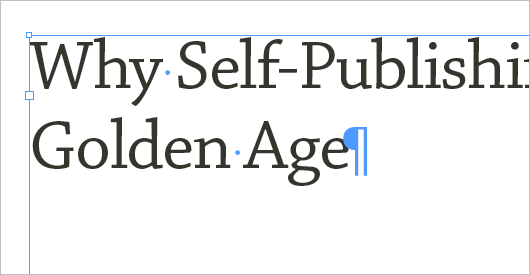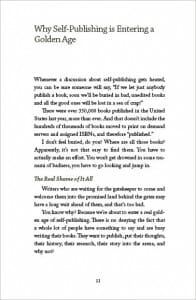
Last week I talked about how to get a book out of your blog archives, as I explored my own trove of articles in How I’m Going to Book My Blog—And You Can Too Let’s take the next step together. And I have something to confess.
Do As I Say?
Okay, I’m going to come clean now, and tell you exactly why I did what I did next, and why you probably shouldn’t do it that way.
Normally the next logical step in this book-creation sequence would be editorial: the author or an editor goes through the articles and makes a real book out of them. You’ll need to edit out things like “next week on the blog”, make the language clear and consistent, enforce a uniform style and all the other tasks that editors do.
Then the corrected manuscript would have to have all the blog formatting changed to something more appropriate for book typography. Finally the manuscript goes to a designer (or you, if you are doing it yourself) to be laid out into a book. You experiment with different page sizes and typography until you get the look you want, then flow the rest of the pages to match, formatting as needed.
And that’s what you should do, too. It’s a process that creates the best books. But I took a different, and unexpected path.
I read a couple of the articles, and realized this project was fundamentally different than dealing with a raw book manuscript. All these pieces had already been edited and proofread and published. This was more of an assembly. In fact I decided the Word files I created could well be treated as final, ready for layout, manuscript. Then I would be able to do something I’ve never tried before.
I decided I would assemble, lay out, edit and reformat the book all in one pass. In InDesign.
Experienced bookmakers would scratch their heads at this, but one of the benefits of having such a “diverse” background in publishing is that over the years I’ve done many of the tasks in the publishing company. I’m not promoting this as a career strategy, far from it. But sometimes there are unexpected benefits to paying too little attention to career advancement, and this was one of those times. But seriously, don’t try this at home.
Direct to Press
I created a pleasant text layout in a 5.25″ x 8″ format, because I like small books and have a more intimate feeling reading them. This book does not include a lot of detailed information on layouts, typography, or anything else that needs illustration, it’s likely going to be all text. A book that needed illustration would be better at a larger size.I took the first article and put it into my layout. As I formatted the typography with a clean title layout in Adobe Chaparral Pro, and the text in Adobe Caslon, I read through the article, stripping out the irrelevant references, the blog dateline, the original image from the header that had been copies over in the move to Word, and any excess coding. I took out the hyperlinks and their associated hyperlink character style.
Next I went through and eliminated the formatting that I often use for blog posts. For instance, where I had a number list: “7 Scenarios for Successful Self-Publishing” I took the numbers out and made a hanging indent format for each paragraph, with a bold lead-in at the beginning. This is much more like the formatting used in books, and not the scannable, attention-grabbing format used in blog posts.
Moving onto the next article, and the next, I soon had an entire section done. Using master pages for the article openings, I could format the book so it looked more like a book, and less like a bunch of articles.
The first section took me about 4 hours, since I had to create all the typesetting formats at the same time and decide on a lot of little design details, like how to space the titles, what kinds of lists I would have, formats for tips I might want to add to the originals, some of which were written 18 months ago.
The Story So Far
The book is taking shape rapidly and will be finished within the next 24 hours. I’ve spent 2 weeks on the project and I’m extremely happy with where it is.
You can do the same, too, if you’ve been blogging or writing for any length of time. I was listening to an audio with Brian Clark, the founder of Copyblogger Media. He described what he went through early in his blog’s life to promote his work. Brian wasn’t seeking celebrity, far from it. But he said he thought it would be helpful to so many people he had an ethical duty to promote it.
That’s where we are as authors who run blogs or write articles. You’ve written a lot of useful material, yet people can’t find it easily. If we don’t promote it, we’re not doing our job of getting this information to the greatest number of people. In the process we’re going to develop books based around the information that’s already proven popular on the blog.
Is this any way to create books? I think it just might be one way that could work.



